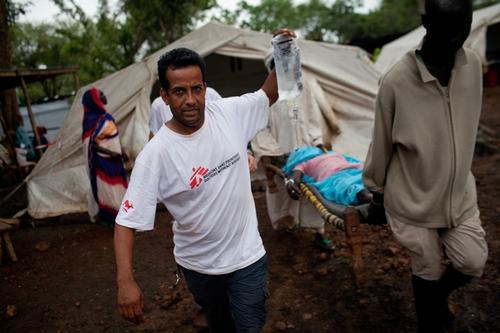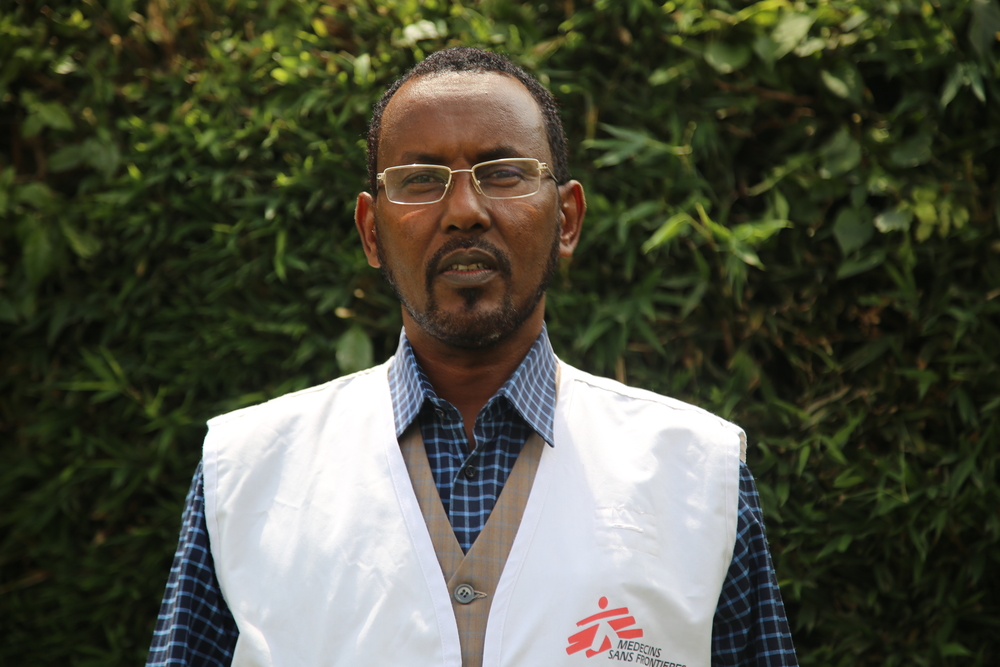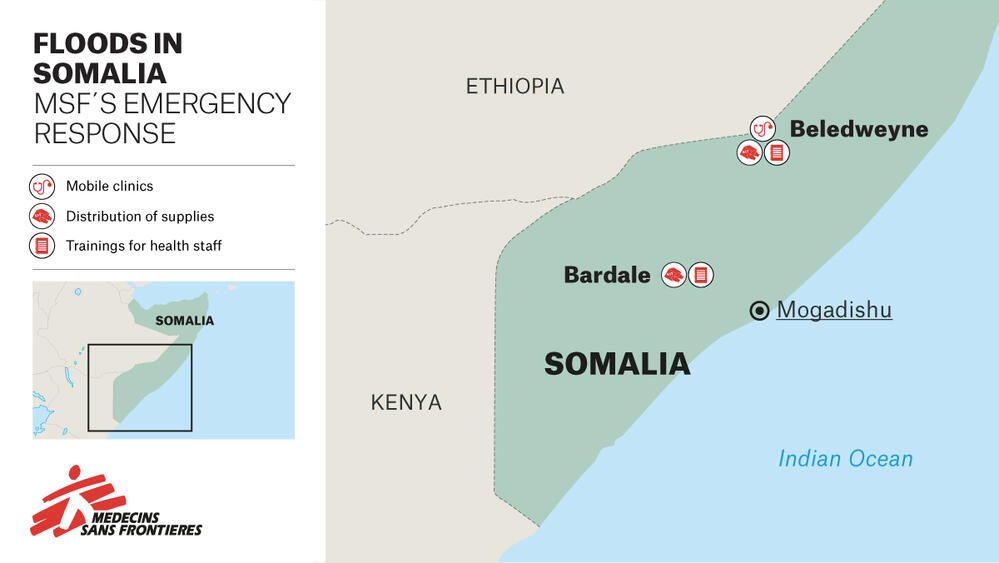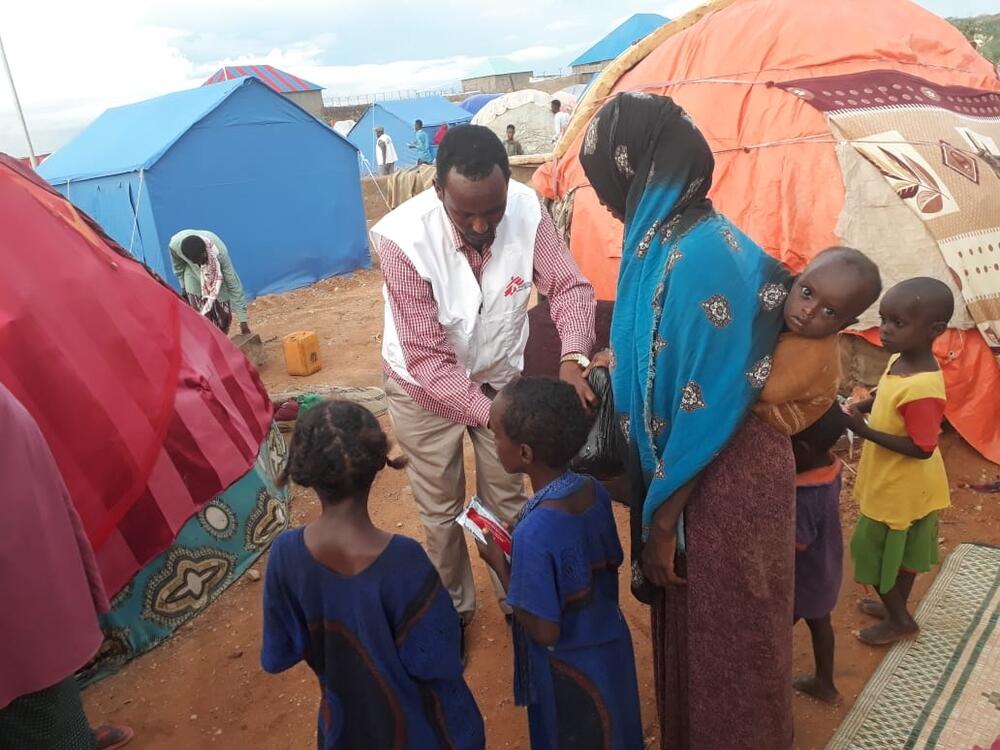Somalia: MSF teams are on the ground as floods leave thousands in need
In October, heavy rains caused widespread flooding in southern and central parts of Somalia, submerging cities and forcing hundreds of thousands from their homes.
MSF's humanitarian affairs advisor for Somalia and Somaliland, Mohamed Kalil, was part of the first emergency team sent to the worst-affected area, the Beledweyne district in central Somalia, where 270,000 people have been displaced.
As the floodwaters receded and the damage was revealed, Mohamed saw the need was much greater than initially thought...
Beledweyne is a big town in central Somalia, with high-rise buildings and a vibrant commercial activity.
Although it is frequently affected by seasonal rains, this year was different.
The Shabelle river was so swollen with water from the highlands of neighbouring Ethiopia that, in late October, its banks burst. The town was inundated.
Rich or poor, everyone is affected
The floods have affected everyone, rich and poor, in a way that locals don’t remember ever having seen.
Everyone was forced out of their homes and offices.
"People are in such extremely vulnerable situations that it is often an impossible dilemma to decide who has the greatest needs"
In the business district, the water reached a level that couldn’t even be measured.
Some people, desperate to escape the rising floodwaters, climbed up to rooftops and were trapped there, isolated; others were rescued by boat from their homes.
Hundreds of thousands displaced
In a short space of time, the floods displaced around 270,000 people in Beledweyne. They went to higher areas in the western and eastern parts of the town.
Most are now living in makeshift shelters, which are often just clothes spread across wooden sticks or fastened to trees.
It will be a long time before they can return home.
The impact
We arrived with a small team in Beledweyne on October 31.
What was supposed to be an assessment immediately turned into an emergency response due to the immense need.
People are in such extremely vulnerable situations that it is often an impossible dilemma to decide who has the greatest needs.
I have seen adults and children taking turns to use tents or makeshift shelters because there aren’t enough to shelter the whole family.
I have seen women delivering in very unhygienic conditions and a desperate malnourished mother, who had lost her husband, unable to breastfeed her newborn twins due to hunger.
One day, while assessing an affected area, I was struck by the sight of a very old woman seeking refuge in a precarious makeshift shelter.
Days later, when we returned to provide a tent, it was already too late. We were told she was dead.
The aftermath
After a few days without rain, the water is now receding, but it’s clear that the roads and sewage system have been severely damaged.
Sewage and floodwater have mixed, widely contaminating the shallow wells that provide drinking water.
Food stocks have been washed away and stagnant puddles of water are everywhere, creating breeding grounds for mosquitoes that cause malaria and other diseases.
The district hospital was flooded with half a metre of water. Only the operating theatre, situated in a more elevated area, wasn’t affected.
Medical consultations stopped and the facility hasn’t been functional for the past three weeks.
The electric system was likely damaged and barely any of the medical supplies will be useable again.
MSF response
Despite the closure of the local airport over several days, our emergency team was able to transport supplies of therapeutic food, tents and non-food items, such as blankets, buckets and cooking utensils, by road.
We also built latrines and trucked in safe drinking water.

Help us prepare for the next emergency
A second MSF team arrived a week after us. After training staff from the Ministry of Health, they set up mobile clinics in four different areas of the town.
We see a lot of suffering.
Children arrive with respiratory tract infections like pneumonia. We are treating many vector-borne diseases, particularly malaria, cases of watery diarrhoea and fevers of unknown origin.
Malnutrition levels were already high before the current crisis but now the situation has worsened and many children with severe acute malnutrition are arriving for consultations.
Ongoing concerns
We are concerned about the possible sharp increase of malaria cases and outbreaks of water-borne diseases like cholera.
The poor water and sanitation conditions in Beledweyne must be improved and access to safe drinking water facilities to avoid the spread of diseases.
The aid distributed so far has been a drop in the ocean.
Some families are even sharing the high-energy food supplement known as PlumpyNut, which is given to children in the treatment of malnutrition.
Others have resorted to drinking rainwater. Many have little protection for the very hot days and the chilly, windy nights.
Concerted and coordinated efforts among humanitarian organisations and the local authorities are needed to continue mobilising assistance and to keep on ensuring that aid reaches the most vulnerable people in time.
MSF in Somalia
Somalia is Africa’s easternmost country, situated on the Horn of Africa.
Médecins Sans Frontières/Doctors Without Borders (MSF) returned to Somalia in May 2017, four years after a series of violent attacks on our staff forced us to withdraw.
Since then, we have steadily increased support to health facilities in different areas around the country, with an initial focus on malnutrition and paediatric care.
Our aim in Somalia is to ensure that people have access to medical care in areas where needs are critical and the security conditions allow us to operate.




